Today we have the honor of speaking with Taeseok Park, a visionary tattoo artist whose surrealist micro-realism pieces are gaining international recognition, and for good reason.
Originally from South Korea and now based in Vancouver, Canada, Taeseok is captivating the tattoo world with his hauntingly detailed black and grey designs. With over 20,000 fans on Instagram and a growing client base around the globe, he is quickly establishing himself as one of the most intriguing artists in the fineline and micro-realism scene.
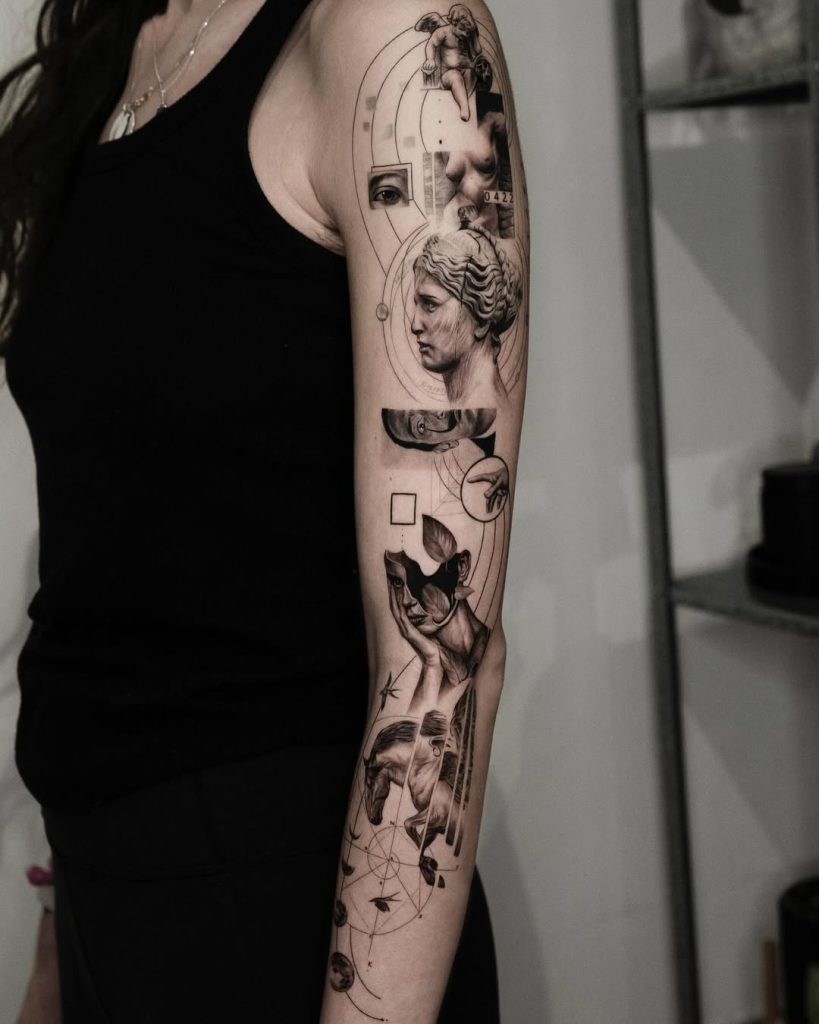
Taeseok’s tattoos are more than just technically flawless. They are deeply conceptual, often incorporating metaphors, visual poetry, and elements from the world of science such as equations, formulas, and code. His compositions are meticulously crafted, creating a sense of mathematical balance and symbolic meaning. The level of detail in his work is astonishing, with some designs looking more like pencil drawings than tattoos.
Although he primarily works in black and grey, Taeseok occasionally uses color with intention, adding contrast and emphasis to specific elements. This controlled approach adds depth without overpowering the composition.
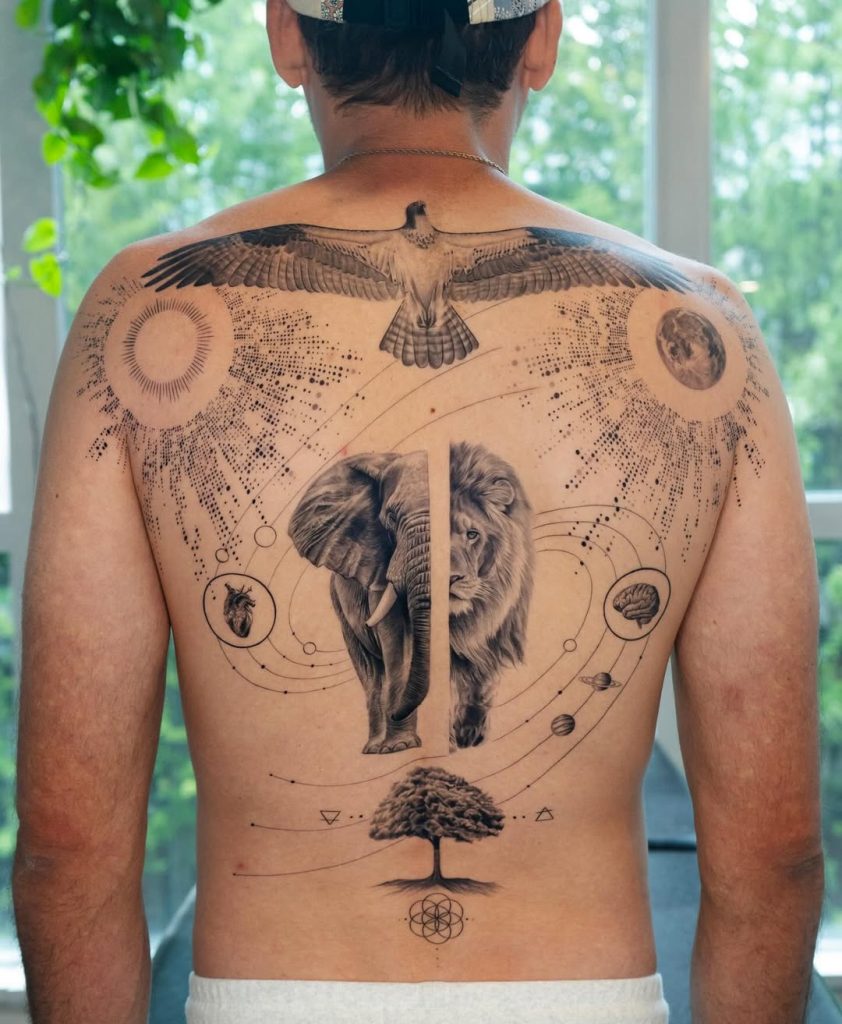
If you’re considering a thought-provoking, surreal sleeve, or you’re simply a fan of hyper-detailed tattoo work, his “Available” highlights on Instagram are a must-see. These ready-made concepts range from single designs to full sleeves.
Let’s get to know Taeseok, explore his creative process, and learn more about the philosophy behind his stunning and symbolic tattoo work.
Hi Taeseok! Can you start by telling us how you first got into the world of tattooing?
Back when I was working as a hair stylist, my days were packed—cutting, coloring, and perming nonstop from morning until night, often without time to even catch my breath. I genuinely loved what I did, but over time, I found myself yearning for a slower, more intentional form of creative expression—something I could truly immerse myself in, both mentally and emotionally.
Then one day, I noticed a floral tattoo on a client’s arm. It immediately caught my eye and made me pause. I was curious—how long did it take? What was the process like? How much did it cost? That evening, I couldn’t stop thinking about it. I didn’t have a formal background in art, but I had always enjoyed drawing and art class as a kid. So I reached out to a tattoo artist I admired on Instagram. That message was the beginning of everything.
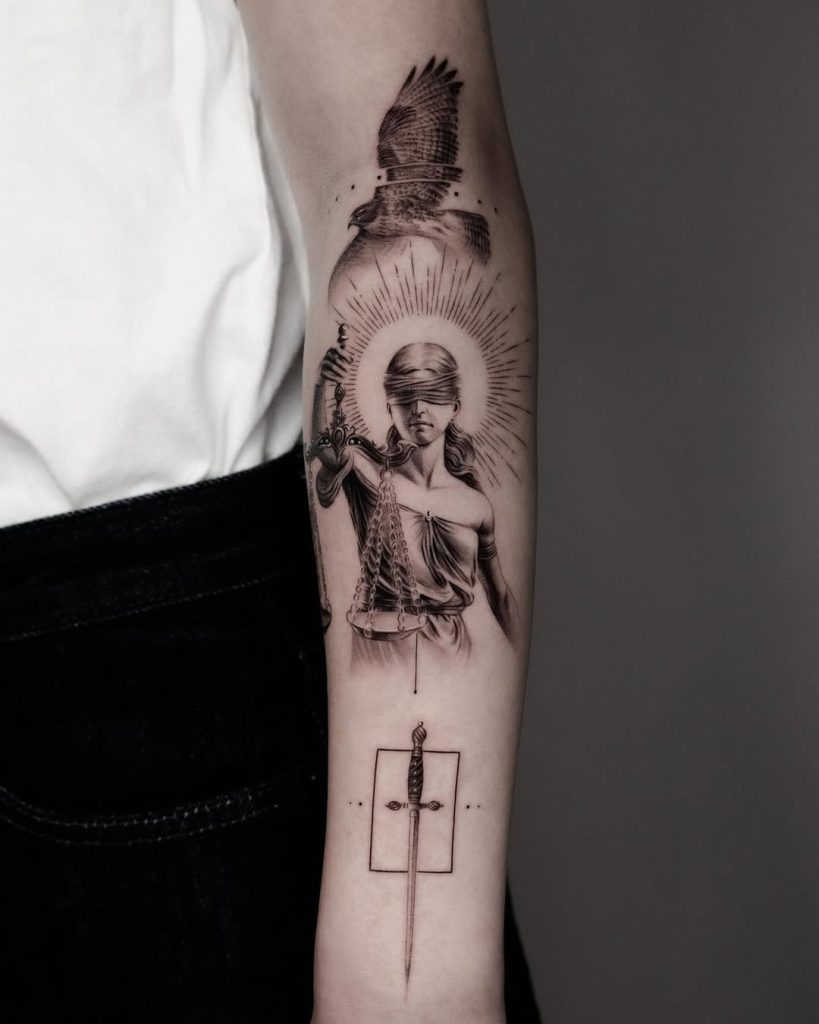
Your style is incredibly refined. How did you develop such precise control and detail in your tattoos?
These days, there are so many incredible tattoo artists out there, and new ones are emerging all the time. So I asked myself, “What kind of work do I need to create to truly stand out in a crowd like this?”
Surprisingly, the answer was pretty simple.
To grow consistently and stay competitive, I realized I needed to focus on what I love and what I do best. One thing I can say with confidence is that my ability to stay deeply focused and committed to something is one of my biggest strengths. When I’m locked in, I don’t burn out easily.
When I first made the decision to pursue tattooing seriously, I studied a massive amount of work. And to me, black and grey tattoos looked by far the most powerful and striking. That style spoke to me the most.
So I committed to that path—and even now, I’m still constantly pushing to refine what I love and what I’m good at. In this particular field, I know I can hold my own against anyone.
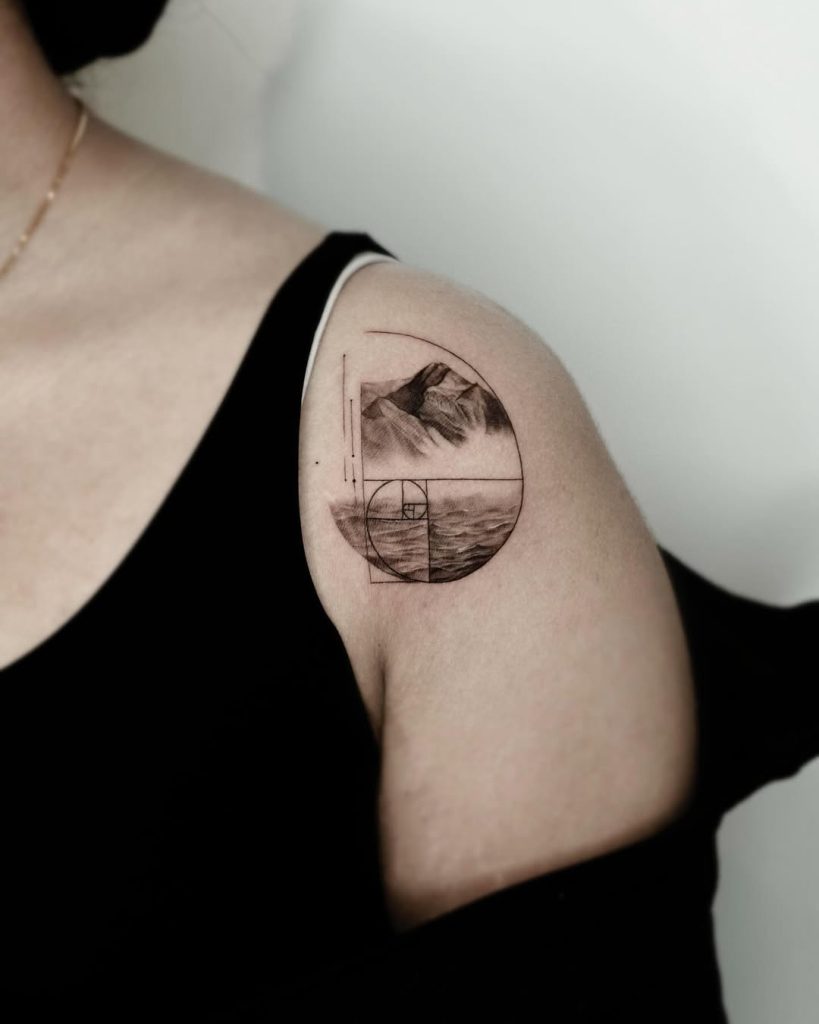
You are known for black and grey pieces, mostly micro-realism. What drew you to this style?
Meaning is important in a tattoo—but let’s be honest, so is how cool it looks.
From that perspective, micro-realism really stood out to me. It has the potential to feel like part of someone’s personal style—almost like fashion. Compared to large-scale tattoos, it’s also more approachable and less intimidating for a lot of people.
What I love most is how I can blend in geometric elements to hold different memories or symbols that matter to the client. There’s a lot of storytelling possible, even in a small space.
Of course, big tattoos have their own undeniable power too—both styles have their own unique charm. I just happen to enjoy working with both ends of that spectrum.
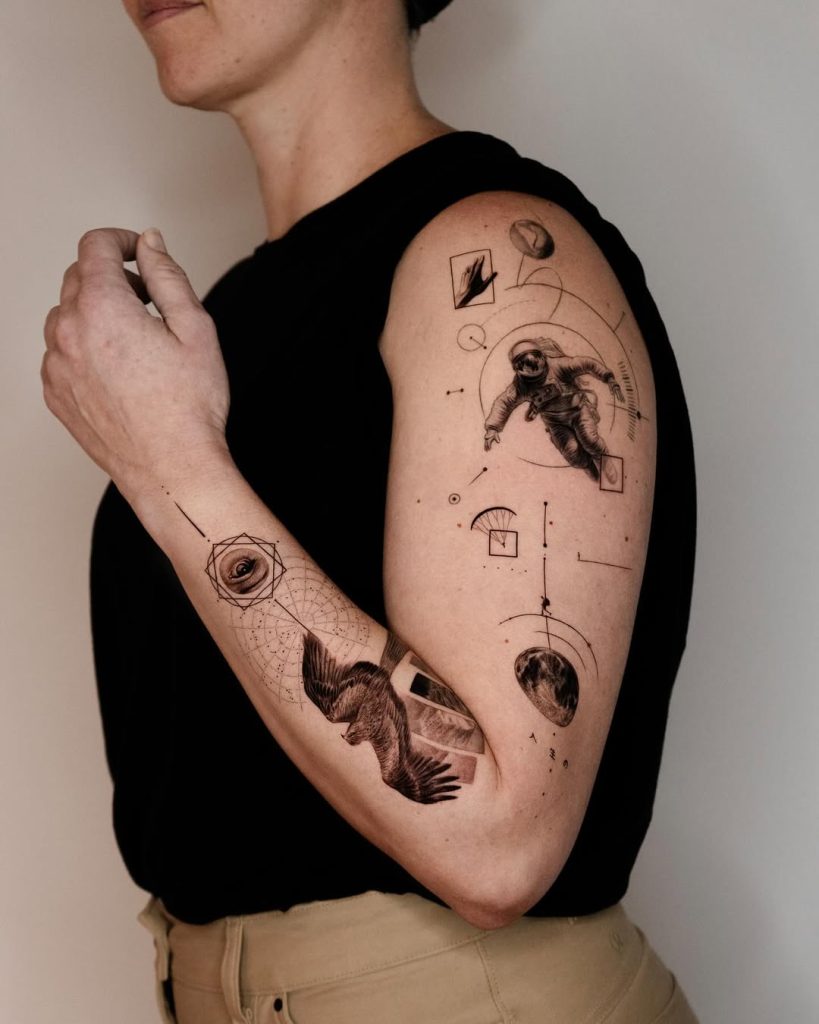
Many of your designs seem to carry symbolic meaning. Where do your ideas come from?
When a client reaches out with a meaningful story they want to turn into a tattoo, the first thing I ask for is everything—photos, quotes, videos, even songs they listened to on repeat. Anything that helps me understand their world.
From there, I break it down into a main theme, sub-elements, and background, and start designing something that flows naturally with the shape of the body.
But when I’m designing something on my own—just for the love of it—inspiration can come from anywhere.
Memories from traveling, a cool boutique or restaurant, an art exhibit, even a random scroll through Instagram or Pinterest.
That said, some of my best ideas usually hit me at the most random moments—like mid-workout or in the shower. (I swear, the water pressure unlocks creative potential.)
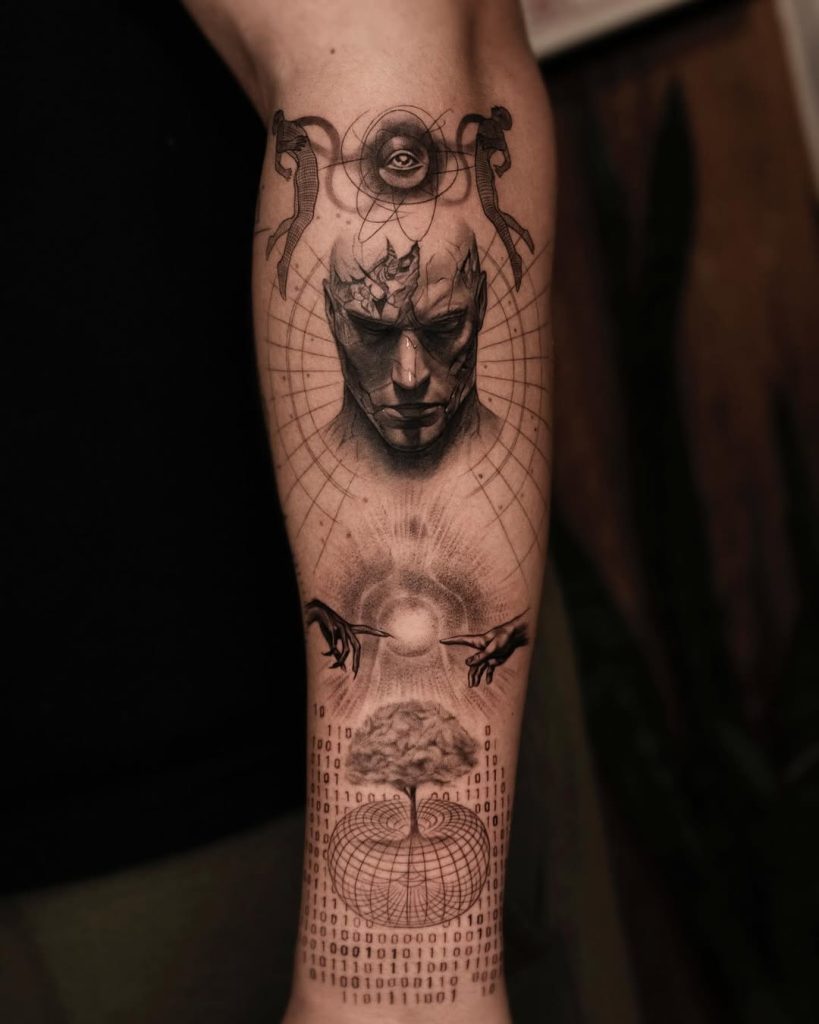
You often include elements like binary code, mathematical formulas, and diagrams. What inspired you to bring science into your artwork?
I’m not a fan of overly dark or heavy background shading just for the sake of making the main subject pop. It often feels like visual noise to me.
Instead of defaulting to dramatic black fills, I started exploring alternative ways to support the composition—and after a lot of experimenting, I found that scientific elements like binary code, mathematical formulas, and diagrams did the trick.
They enhance the focus on the main subject while also adding a layer of visual sophistication.
They’re not just cool to look at—they serve a purpose. For me, it’s about striking the perfect balance between meaning and aesthetics, and these elements help me do exactly that.

When creating a full composition, what does your design process look like from concept to final execution?
When someone comes to me with a personal story they want to express through a tattoo, I treat it like a collaborative puzzle. I ask for everything that might help me understand their world—photos, quotes, favorite songs, even random clips that resonate with them.
Once I have that, I start identifying the emotional priorities: What’s the heart of the story? What supports it? What belongs in the background? Then I shape the composition to flow naturally with the body—because great tattoo design isn’t just about meaning, it’s about how that meaning lives and breathes on skin.
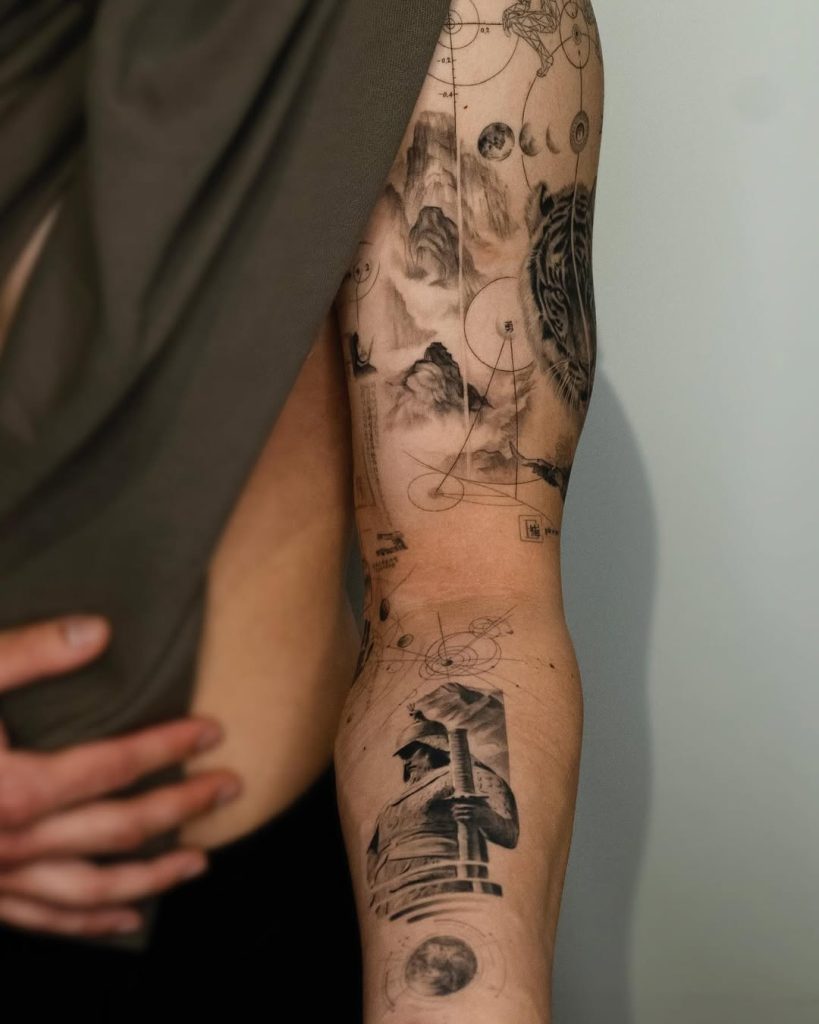
A lot of people wonder how fineline and micro-realism tattoos age over time. What can you tell potential clients about how these tattoos change over time?
Many people assume that fine line tattoos don’t hold up as well over time compared to larger, bolder pieces—and honestly, that concern isn’t entirely unfounded.
Fine line work requires an incredibly delicate touch. The margin for error is smaller, the depth must be carefully controlled, and it’s not a style where you can just go in aggressively with the needle. Because the lines are so thin, there’s also a slightly higher risk of spreading or fading if not done properly.
That said, when executed by an experienced artist who understands the technical nuances—needle tension, depth control, skin type—these tattoos can age beautifully.
With the right hands, fine line tattoos not only last, they hold their elegance for years.
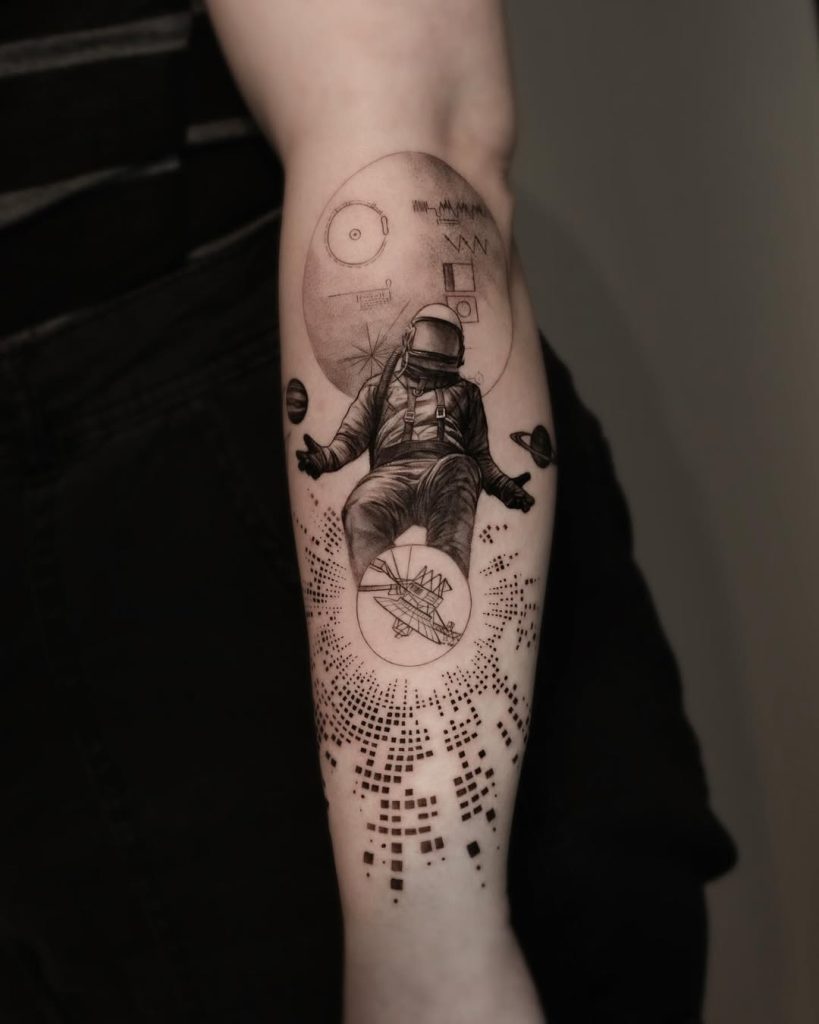
Do you use single needles for the finer details? What tools and techniques do you prefer for precision?
Yes, I do. I use single needles from Kwadron—specifically their 1RL in size 35. I’m proud to be sponsored by them, and honestly, anyone in the tattoo industry knows their gear speaks for itself.
When it comes to technique, single needles require a delicate hand. Because they’re so fine, there’s a higher risk of line spreading if not handled properly. Many artists tend to stay on the shallow side to avoid blowouts, but the truth is—if you go too light, the line may look fine during the session but fade significantly once healed.
The key is finding that perfect depth—deep enough for the ink to settle cleanly, but not so deep that it damages the skin. That sweet spot is something you can only learn through time, repetition, and developing a true feel for how the needle should move through the skin.
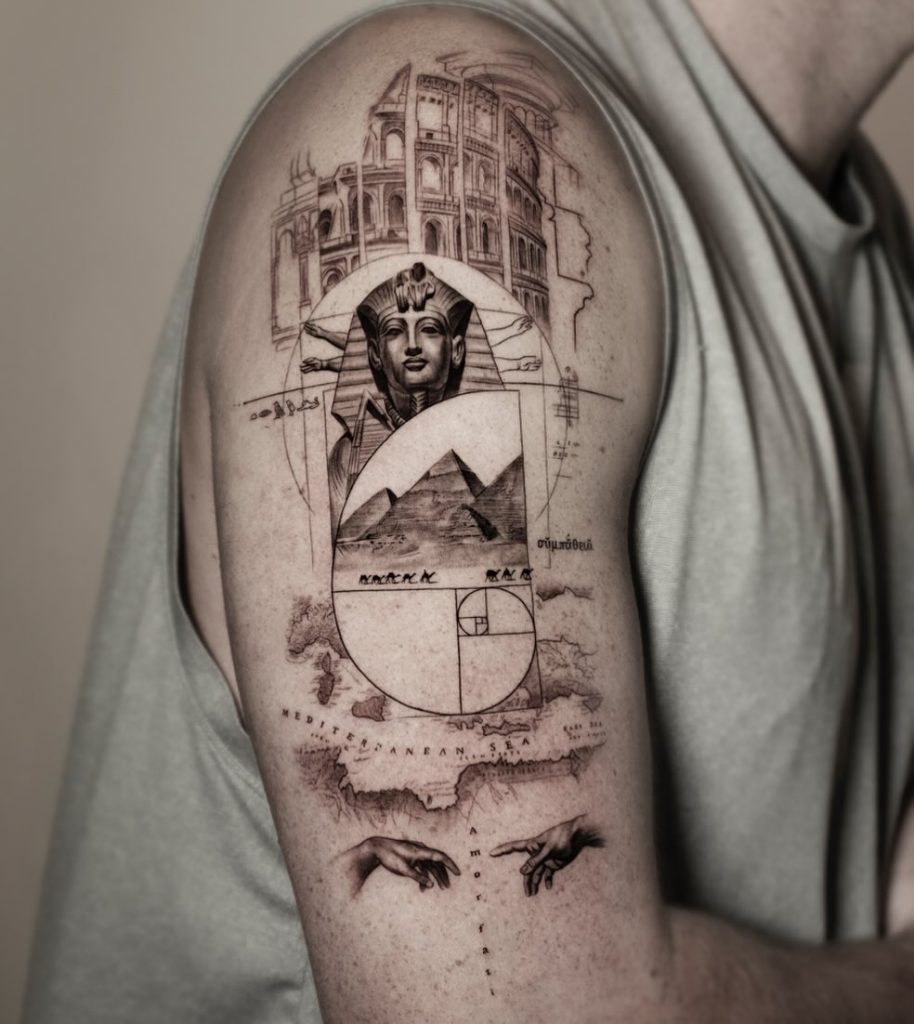
Your sleeves are very unified and balanced. Are they fully planned from the beginning, or do they evolve over multiple sessions?
I always begin by assessing the placement and size the client has in mind. From there, I consider how to use the space effectively—starting with the anatomical structure of the muscles. Once I’ve mapped that out, I select the main image and begin designing with geometric lines that flow naturally along the muscle direction, all within the scope of what the client envisions.
That said, during the actual process, there are times when unexpected gaps or empty areas reveal themselves.
In those cases, I refine and expand the composition gradually over multiple sessions, allowing the piece to evolve organically while maintaining balance and flow.
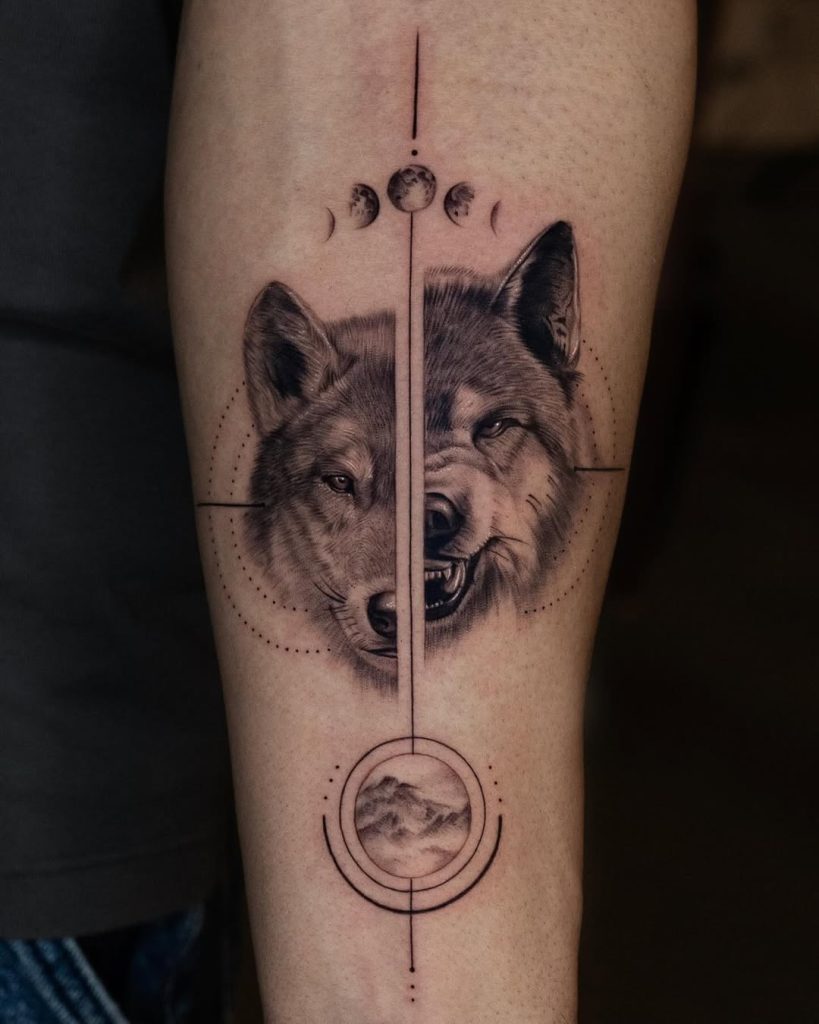
Can you share a particular tattoo that is especially meaningful to you? What made it stand out in your career?
One particularly meaningful project was a piece where the client gave me complete creative freedom—something I deeply appreciated. I was able to fully express my own design vision, and that tattoo ended up being the one I entered in my very first convention. To my surprise and joy, it won an award. It was the first time I felt like the path I had taken as an artist was truly being recognized, and it gave me a deep sense of validation. It also sparked a desire in me to keep pushing myself and to continue entering competitions.
That experience became the starting point for more. I went on to win awards at the 2024 and 2025 Vancouver Tattoo Conventions, where some of the best artists from around the world come together.
Being surrounded by such passionate and driven creatives—watching them work, sharing space with them, learning from them—was incredibly motivating. It pushed me to reflect on my own work and gave me new clarity on where I want to take my art next. It was a turning point that had a powerful impact on my creative direction.
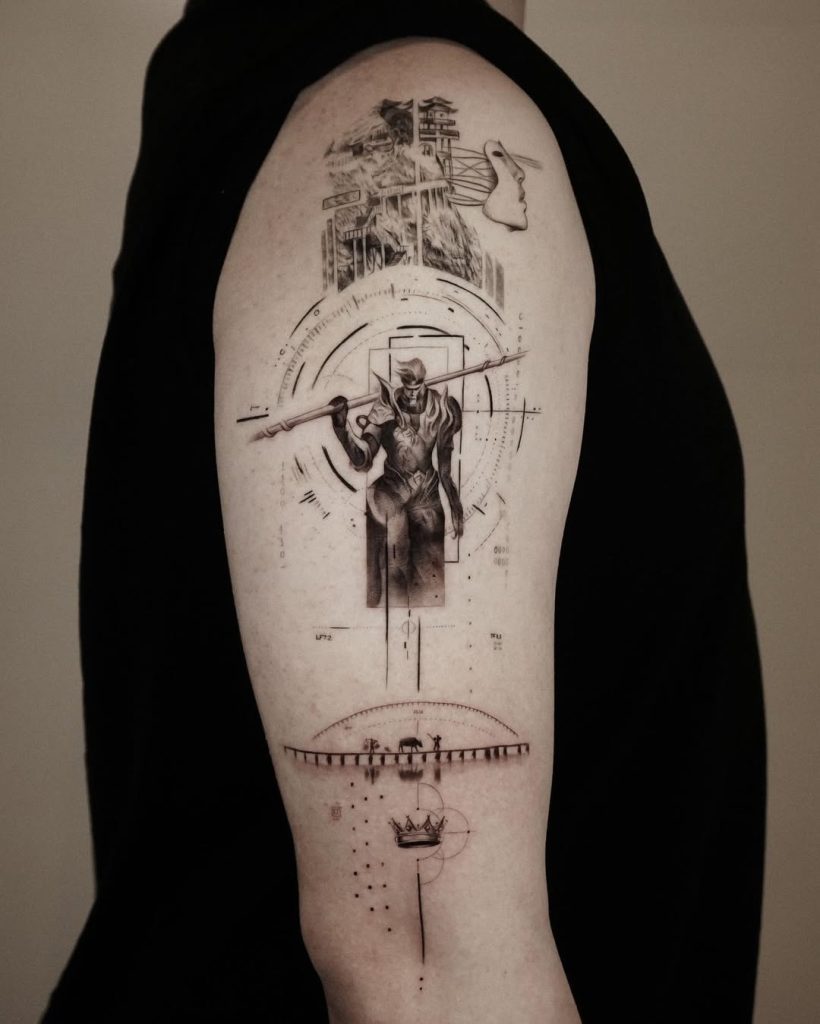
What is one of the most memorable or surprising client experiences you’ve had so far?
One particularly memorable experience was tattooing American actor Owen Joyner. He was in Vancouver filming Final Destination: Bloodlines, and despite his packed shooting schedule, he made time to come see me—which was both surprising and genuinely flattering.
In Korea, I’ve also had the opportunity to tattoo several influencers, as well as a student of The Korean Zombie—one of the most iconic UFC fighters to ever represent the country.
Moments like these remind me that my work is reaching people from all kinds of worlds, and I don’t take that lightly.
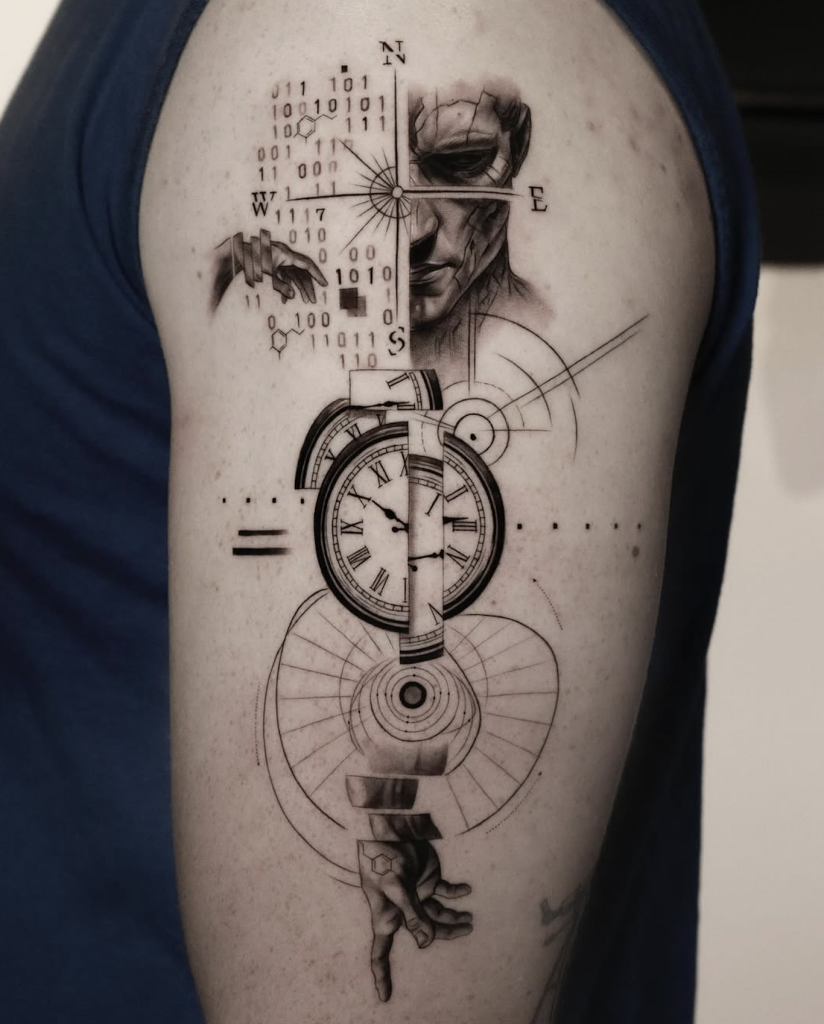
Thank you, Taeseok, for taking the time to share your thoughts and creative vision with us.
Your work pushes the boundaries of what tattoo art can be. Through careful detail, layered meaning, and technical mastery, you are helping redefine black and grey tattooing with intelligence and emotion.
To see more of Taeseok Park’s tattoos and available designs, visit his Instagram: @t.a.e_t
Know a tattoo artist we should feature next? Let us know by sending an email to [email protected]. Thanks for joining us in this exploration of some of the most talented artists in the world of tattooing.


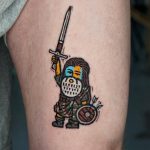
No Comment! Be the first one.